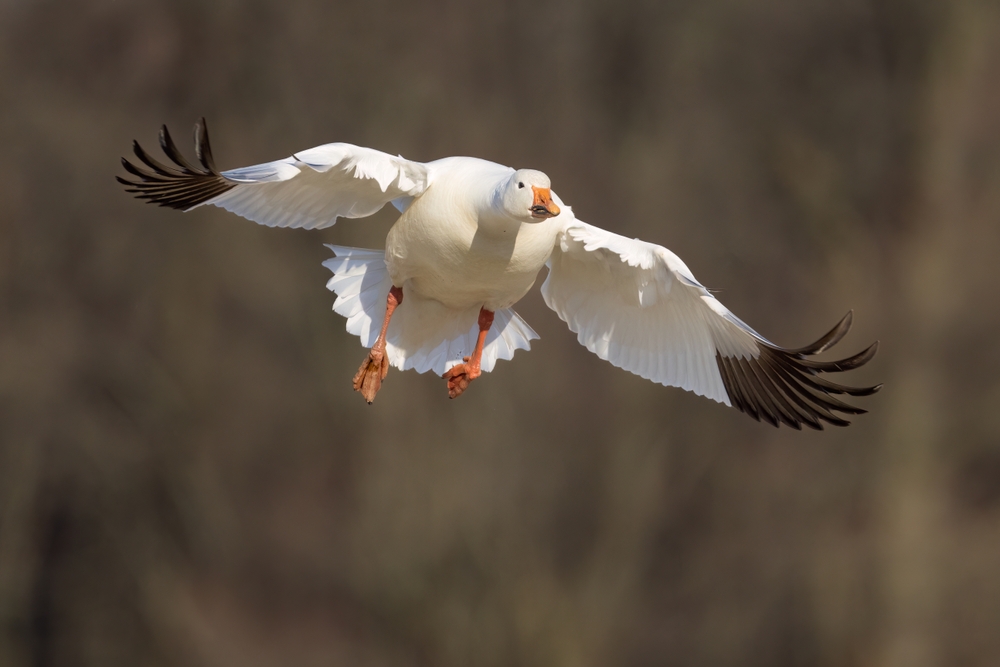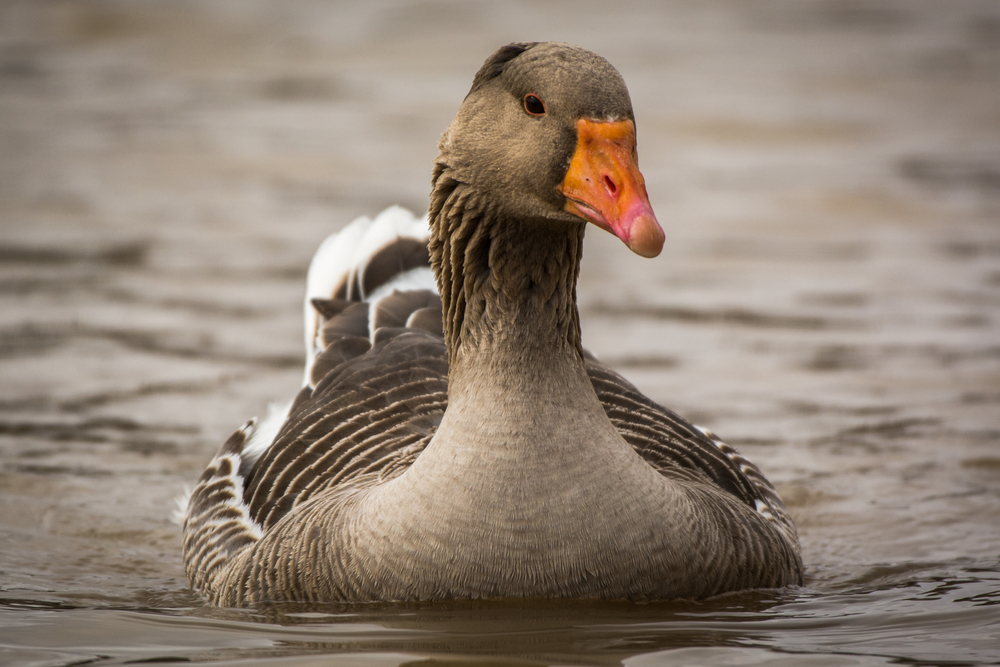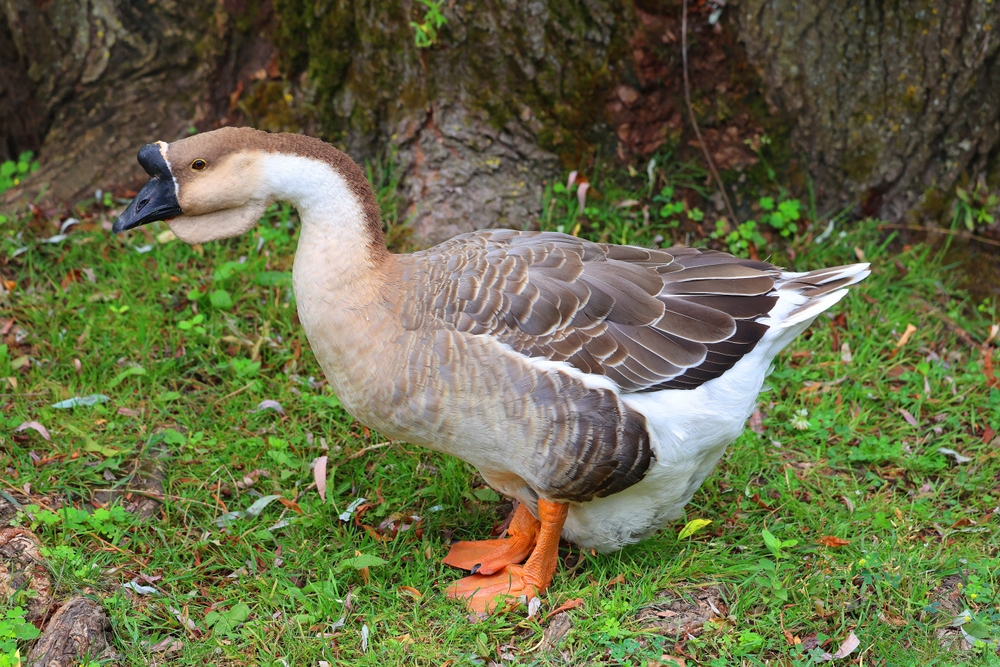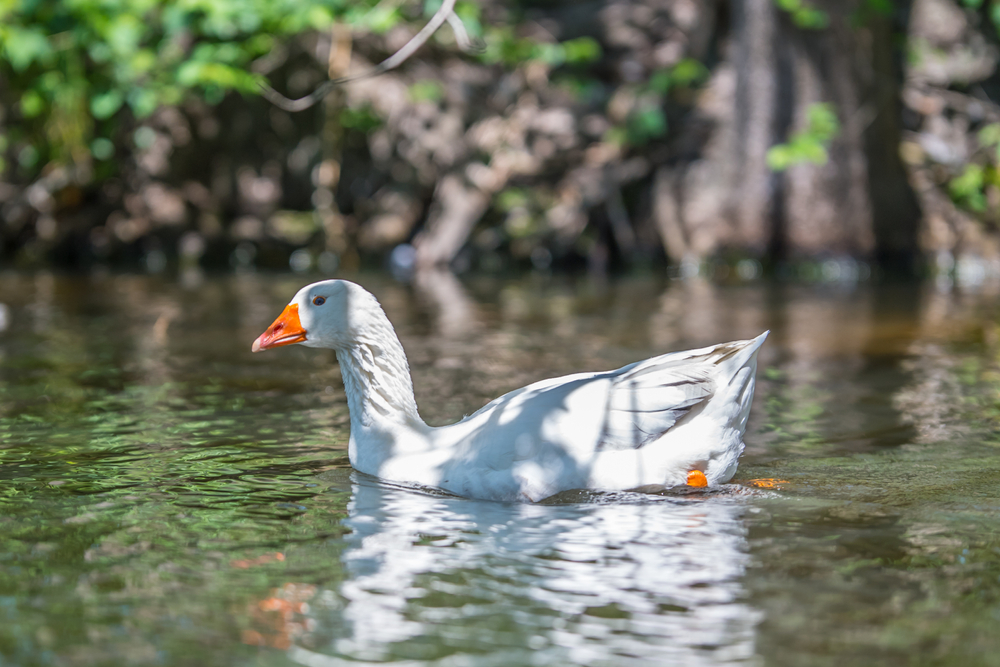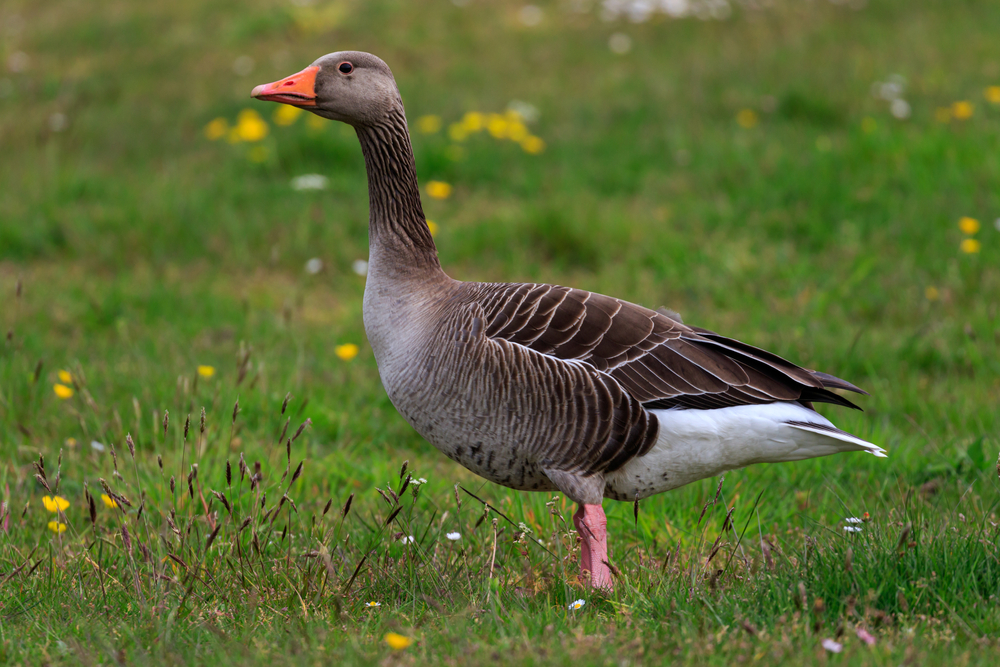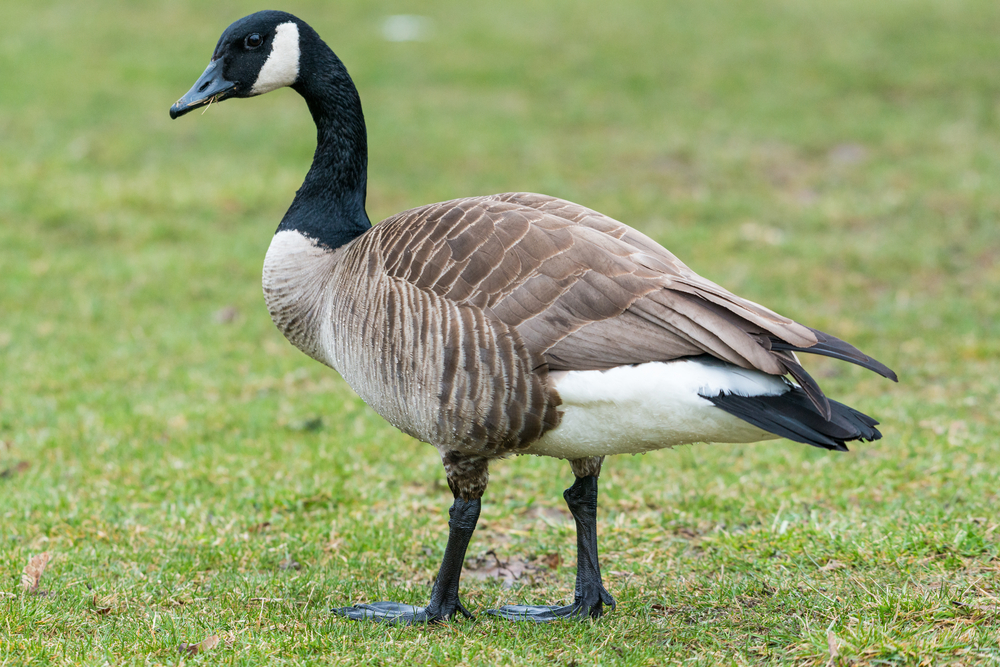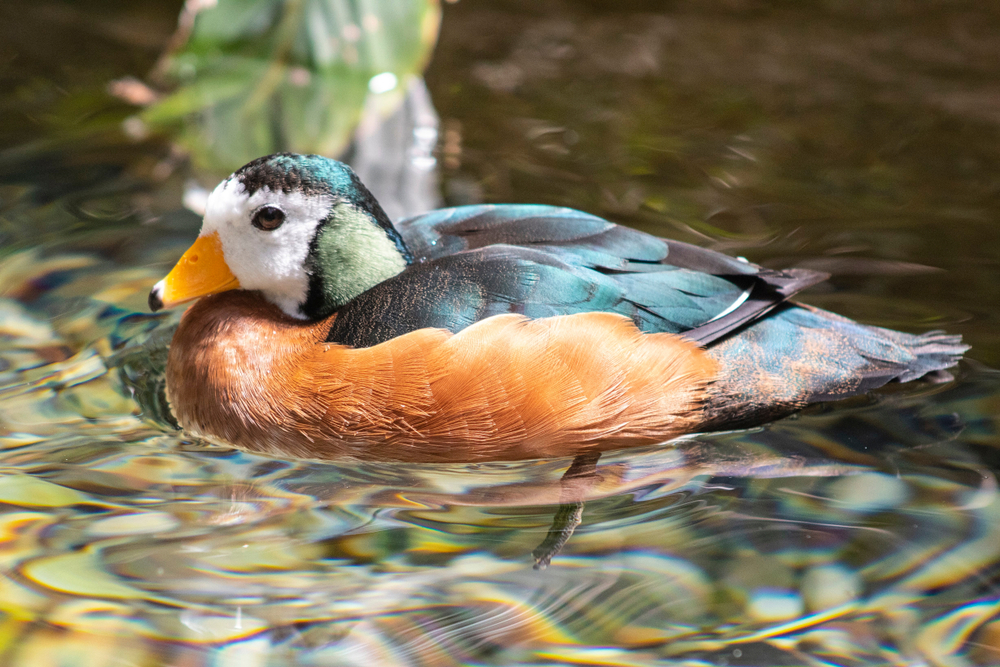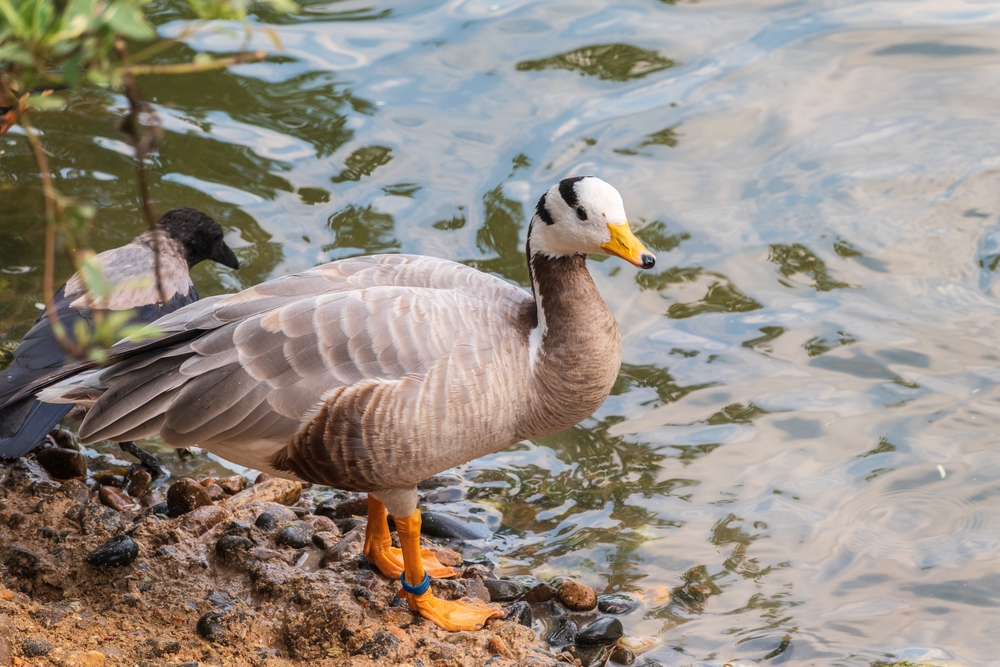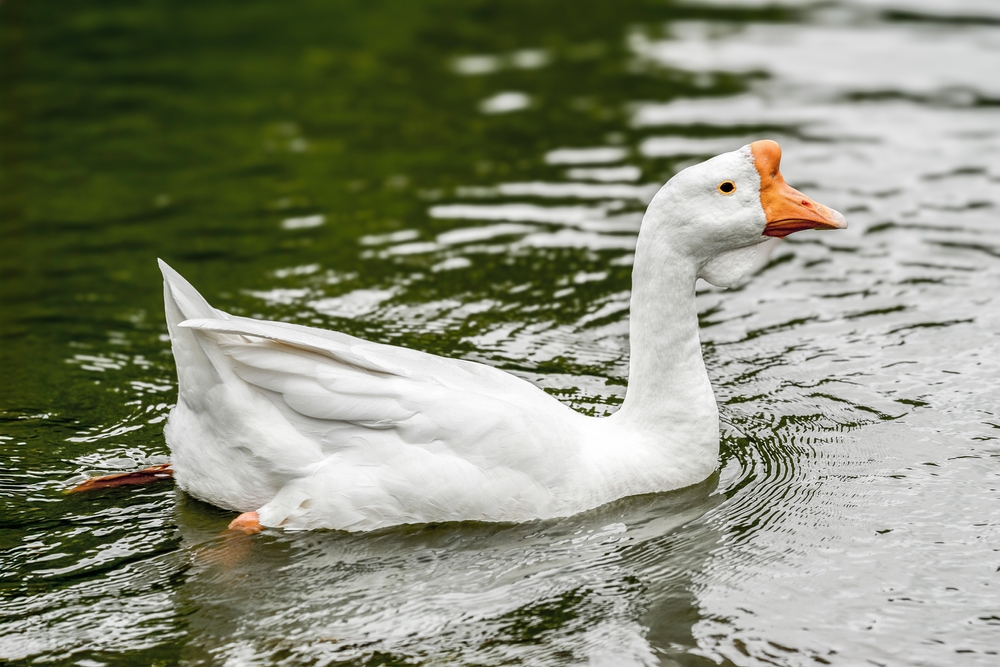The closest relative is the Ross’s Goose (Anser rossii), a smaller Arctic-breeding goose that often migrates and winters alongside Snow Geese. Both species share similar appearance and habits, though the Ross’s Goose lacks the “grinning patch” and is more petite.
About
The Snow Goose (Anser caerulescens) is a medium-sized migratory goose of the Anatidae family, celebrated for its vast flocks that fill skies and wetlands across North America. Breeding in the Arctic tundra of Canada, Greenland, and Siberia, Snow Geese migrate thousands of kilometers each year to wintering grounds in the southern United States and Mexico, creating one of the continent’s most spectacular wildlife phenomena.
Snow Geese measure 66 to 84 centimeters (26 to 33 inches) in length, with a wingspan of 135 to 165 centimeters (53 to 65 inches). Two color morphs exist: the white morph, with pure white plumage accented by black wingtips, and the blue morph, which has a dark gray body with a white head. Both forms belong to the same species and often intermingle within flocks. Their pink bills, marked with a dark “grinning patch,” and pink legs are distinctive features.
These geese are herbivorous, feeding primarily on grasses, roots, grains, and aquatic plants. They often forage in large groups, grazing fields bare or digging for roots with their strong bills. Their role as grazers influences tundra and wetland ecosystems, though their booming populations have sometimes led to overgrazing in Arctic breeding areas.
Snow Geese nest in colonies on the ground, often near lakes or rivers. Females lay three to five eggs, and both parents guard and care for the goslings, which must quickly develop to survive the short Arctic summer. The species’ synchronized hatching and mass movements provide some protection from predators.
Listed as Least Concern, the Snow Goose population has increased dramatically due to expanded food sources in agricultural fields. However, this success poses ecological challenges, as their sheer numbers threaten delicate Arctic habitats.
With their dazzling plumage, thunderous calls, and awe-inspiring migrations, Snow Geese remain one of North America’s most iconic waterfowl.
Physical Characteristics
The Snow Goose is a medium-sized migratory goose of North America, easily recognized for its striking plumage variations and large seasonal flocks.
Plumage: Two primary color morphs exist:
-
White Morph: Pure white body with contrasting black wingtips visible in flight.
-
Blue Morph (Blue Goose): Slate-gray body with a white head and upper neck, creating a sharp two-toned appearance. Both morphs may occur in the same flock and interbreed freely.
Head & Beak: The head is rounded with a short, stout pink bill marked by a distinct black “grinning patch” or “smile line” along the edges. This feature helps distinguish them from other geese. Eyes are dark and alert.
Body & Neck: The body is compact and sturdy, with a long, straight neck. Legs and feet are pink to reddish, aiding in identification.
Size:
-
Length (Body and Tail): 25–33 in (64–84 cm)
-
Wingspan: 53–65 in (135–165 cm)
-
Tail Length: 4–6 in (10–15 cm)
Weight:
-
Adult Male (Gander): 5.5–7.5 lbs (2.5–3.4 kg)
-
Adult Female (Goose): 4.5–6.6 lbs (2–3 kg)
Distinctive Flight: In flight, Snow Geese display rapid wingbeats and strong formations, often creating spectacular flocks numbering in the tens of thousands.
The Snow Goose’s bold plumage morphs, pink bill with black edges, and immense migratory flocks make it one of the most visually striking and easily recognizable geese of North America.
Reproduction
The Snow Goose is a colonial breeder of the Arctic tundra, nesting in dense colonies that can number thousands of pairs. Its reproductive cycle is strongly tied to the short Arctic summer.
1. Mating and Courtship:
Snow Geese are monogamous and typically mate for life. Pairs engage in mutual calling, head-dipping, and synchronized movements during courtship. Established pairs migrate and nest together year after year.
2. Breeding Season:
Breeding begins in late spring to early summer (May–June), timed with snowmelt on Arctic tundra. Delays in spring thaw can shorten the breeding window significantly.
3. Nesting:
The female builds a shallow ground nest lined with grasses, moss, and down plucked from her breast. Nests are often located near ponds, lakes, or streams, and placed close together in colonies for protection.
4. Egg Laying and Incubation:
The clutch typically contains 3–5 creamy-white eggs. The female incubates for 22–25 days, while the male guards the territory against predators.
5. Hatching and Chick Development:
Goslings hatch covered in grayish down and weigh around 3 oz (85 g). They are precocial, leaving the nest within 24 hours to graze on tundra vegetation under parental guidance.
6. Growth and Fledging:
Young Snow Geese grow rapidly on rich Arctic vegetation and fledge at about 6–7 weeks of age. They remain with their parents through migration to the wintering grounds.
7. Sexual Maturity:
Snow Geese reach breeding age at about 2–3 years, though some may not breed until 4 years if conditions are poor.
The Snow Goose’s colonial nesting strategy, strong pair bonds, and synchrony with the Arctic summer ensure reproductive success in one of the most extreme breeding environments on earth.
Lifespan
The Snow Goose is a long-lived migratory goose, with survival closely linked to the challenges of Arctic breeding and long-distance migration.
Lifespan in the Wild:
On average, Snow Geese live 10–15 years, though many survive into their late teens. With favorable conditions, some individuals may reach 20 years or more.
Lifespan in Captivity:
In aviaries or protected reserves with no migration risks or predators, Snow Geese can live 20–25 years, benefitting from reliable food and medical care.
Threats to the Snow Goose:
-
Predation: Eggs and goslings face heavy predation from Arctic foxes, jaegers, gulls, and ravens. Adults are vulnerable to foxes, eagles, and wolves.
-
Migration Hazards: Long-distance flights expose them to storms, exhaustion, collisions, and hunting.
-
Hunting Pressure: In North America, Snow Geese are heavily hunted due to large populations, which affects adult survival rates.
-
Habitat Change: Climate change alters Arctic breeding grounds and wetland stopovers, impacting long-term survival.
Conservation Status:
Snow Geese are listed as a species of Least Concern by the IUCN, with populations increasing dramatically in recent decades. Their adaptability to farmland feeding has allowed them to thrive, though overpopulation in some regions has raised ecological concerns about tundra habitat degradation.
Eating Habits
The Snow Goose is primarily a grazer and digger, with feeding habits adapted for both Arctic tundra summers and agricultural wintering grounds.
Diet:
They feed mainly on grasses, sedges, rushes, roots, shoots, seeds, and aquatic plants. During migration and winter, they also consume waste grain, rice, corn, and wheat in farmland fields.
Foraging Strategy:
Snow Geese are known as grubbers, often digging with their stout bills to pull up underground roots and rhizomes. This can leave large patches of tundra visibly torn up after feeding. In agricultural areas, they graze stubble fields in huge flocks.
Feeding Behavior:
They are highly social feeders, foraging in dense flocks numbering thousands of birds. Feeding is often synchronized, with groups moving across fields or marshes together. Constant calling maintains cohesion within flocks.
Feeding Young:
Goslings graze on soft tundra vegetation within hours of hatching. Parents lead them to rich feeding grounds, though goslings feed independently from the start.
Seasonal Feeding:
-
Spring and Summer (Arctic Breeding Grounds): Grasses, sedges, and mosses dominate the diet.
-
Autumn and Winter (Migration & Wintering Grounds): Waste grain, rice, and corn in agricultural fields, supplemented by aquatic vegetation.
Ecological Role:
Their intense grazing and grubbing alter tundra ecosystems, sometimes damaging fragile Arctic vegetation. On wintering grounds, they play an important role in recycling nutrients in wetlands and farmland.
The Snow Goose’s dual ability to feed on both natural vegetation and agricultural crops has contributed to its population boom, making it one of the most abundant geese in North America.
Uniqueness
The Snow Goose is one of the most striking and abundant geese in North America, with several features that make it stand out among waterfowl:
Color Morphs: Unlike most geese, Snow Geese occur in two distinct color forms—white morph (pure white with black wingtips) and blue morph (slate-gray body with white head). Both morphs occur together and interbreed freely.
Massive Migratory Flocks: Snow Geese migrate in vast flocks numbering in the tens or even hundreds of thousands, creating some of the most spectacular bird migrations on Earth.
Distinctive Bill Marking: Their pink bill with a black “grinning patch” along the edges is a unique field mark that helps distinguish them from other white geese.
Arctic Breeders: They are one of the few goose species that breed exclusively in the high Arctic tundra, timing their nesting to the brief summer thaw.
Explosive Population Growth: Unlike many waterfowl species, Snow Geese have experienced dramatic population increases in recent decades due to adaptation to agricultural feeding grounds, making them a conservation paradox—abundant, yet ecologically impactful.
Cultural Presence: The Snow Goose has long been a symbol of migration and seasonal change for Indigenous peoples and settlers alike, marking spring and autumn transitions across North America.
The Snow Goose’s spectacular flocks, dual color morphs, and explosive population growth make it one of the most unique and ecologically significant geese in the world.
Be the First to Share Photos of This Species.
FAQ’s
1. What is the closest species to the Snow Goose?
2. How does the Snow Goose compare to other geese?
The Snow Goose is smaller than Canada Geese but larger than Ross’s Geese. Its dual color morphs—white and blue—make it unique among geese. Unlike many species with declining numbers, Snow Goose populations have surged due to their adaptation to farmland, creating massive, noisy flocks unmatched in scale by most other geese.
3. What national parks provide the best opportunities to see a Snow Goose?
What national parks provide the best opportunities to see a Snow Goose?
-
Bosque del Apache National Wildlife Refuge (New Mexico, USA): Famous for spectacular winter flocks.
-
Squaw Creek National Wildlife Refuge (Missouri, USA): A major migration stopover.
-
Delta Marsh (Manitoba, Canada): Critical staging area during migration.
-
San Luis Valley National Wildlife Refuge Complex (Colorado, USA): Thousands gather each spring and fall.
-
Cape May National Wildlife Refuge (New Jersey, USA): Known for Atlantic Flyway migrations.



































































